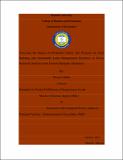| dc.description.abstract | The main objective of this study was to assess the impact of productive safety net program
(PSNP) on asset accumulation and sustainable land management (SLM) practices in eastern
Hararghe, Haramaya district. To this effect primary and secondary data was collected from the
rural households of the study area. Both descriptive analysis and econometrics models were used
for data analysis. The study has two main impact indicators, i.e, asset holding and sustainable
land management. Under asset the livestock asset is converted to the Tropical Livestock Unit
(TLU) while the non-livestock assets are measured based on their current market value as
reported by the respondents. Under the land management there are two groups: soil
conservation (stone and soil bunds, in meter per timad) and fertility improvement practices
(chemical and natural fertilizer application, in kg and quintal per timad respectively). Based on
the econometrics estimation results selection (participation in the productive safety net
programs) was significantly influenced by household demographic characteristics, such as
household head gender, family size, number of active female labor, and housing condition and
number of food gap months per year experienced by the household. The second stage outcome
that is the impact of program participation was found to be positive and significant for both asset
formation (livestock, productive and non-productive) and land management (soil and stone
bund, and chemical and natural fertilizer). Generally the result indicated that, due to program
participation beneficiary households have higher asset size and more involved in land
management as compared to non-beneficiary households. | en_GB |


